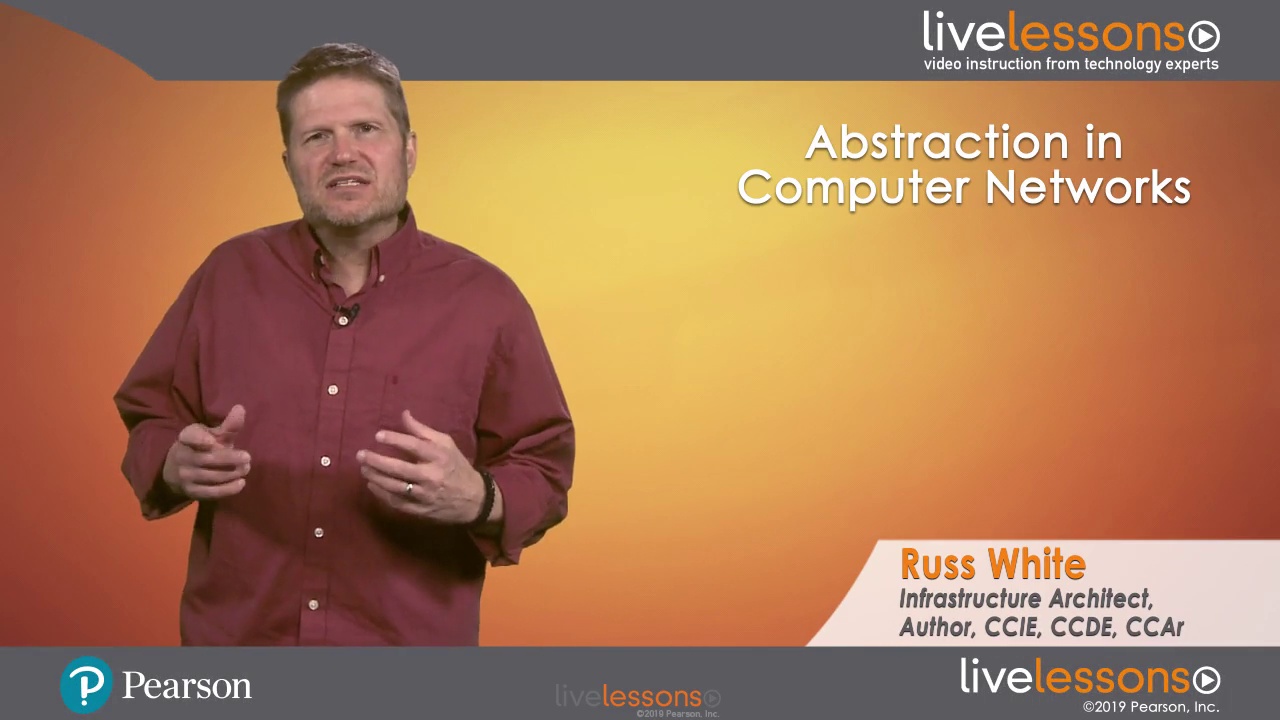Abstraction in Computer Networks LiveLessons (Video Training)
- By Russ White
- Published Jul 2, 2019 by Addison-Wesley Professional.

Online Video
- Your Price: $159.99
- List Price: $199.99
- About this video
Video accessible from your Account page after purchase.
Register your product to gain access to bonus material or receive a coupon.
Description
- Copyright 2020
- Edition: 1st
- Online Video
- ISBN-10: 0-13-644989-1
- ISBN-13: 978-0-13-644989-8
Computer networks rely on many forms of abstraction to scale—indeed, to operate at all. While at least some of this abstraction is visible, such as route aggregation and flooding domain boundary summarization, much of it is hidden in unexpected places, such as in the logical construction of a network device, in the operation of BGP route reflectors, and in the data plane protocol stack.
Abstraction in Computer Networks LiveLessons considers abstraction in theory and practice across many of the places it is used in building network devices, network software, and networks. Tradeoffs and common problems are considered, and the relationship between abstraction and complexity is discussed.
Viewers learn how to think about what abstraction hides, and why it is important to hide each of these things. They also learn how to look in unexpected places for abstraction, how to think about leaky abstractions, and how Keith’s Law and the first corollary to Keith’s Law impact abstraction, including unintended consequences. Abstraction also relates to the State/Optimization/Surface tradeoff triad, so a section of this LiveLesson considers that tradeoff and how abstraction controls the speed and amount of state, impacts the depth and breadth of interaction surfaces, and reduces optimization.
Skill LevelBeginner-Intermediate
Learn How To* Find and understand abstraction, including hidden abstractions, in a network* Find and understand the tradeoffs between abstraction, complexity, understandability, and network optimization* Understand the relationship between Keith’s Law, the first corollary to Keith’s Law, the Law of Leaky Abstractions, and abstraction* Relate unintended consequences to abstraction and interaction surfaces* Relate abstraction to the state/optimization/surface tradeoff triad in network design
Who Should Take This Course* Anyone who wants to go beyond configuring route aggregation, ABRs, redistribution, and virtual topologies so they can understand how these abstractions work to reduce complexity* Anyone who wants to understand the many tradeoffs involved in all kinds of abstraction, and how to seek out and find those tradeoffs in order to make good design decisions* Anyone who wants to be able to decide what kinds of abstraction to use to solve specific problems, how much abstraction to use, and where to apply it
Course Requirements* A basic understanding of the operation of routed control planes, including flooding domain boundaries and route aggregation* A basic understanding of routers and switches, including how routers and switches are used to build networks* A basic understanding of network virtualization* A basic understanding of IPv4 and IPv6 addressing and route aggregation
About Pearson Video TrainingPearson publishes expert-led video tutorials covering a wide selection of technology topics designed to teach you the skills you need to succeed. These professional and personal technology videos feature world-leading author instructors published by your trusted technology brands: Addison-Wesley, Cisco Press, Pearson IT Certification, Prentice Hall, Sams, and Que. Topics include IT Certification, Network Security, Cisco Technology, Programming, Web Development, Mobile Development, and more. Learn more about Pearson Video training at http://www.informit.com/video.
Video Lessons are available for download for offline viewing within the streaming format. Look for the green arrow in each lesson.